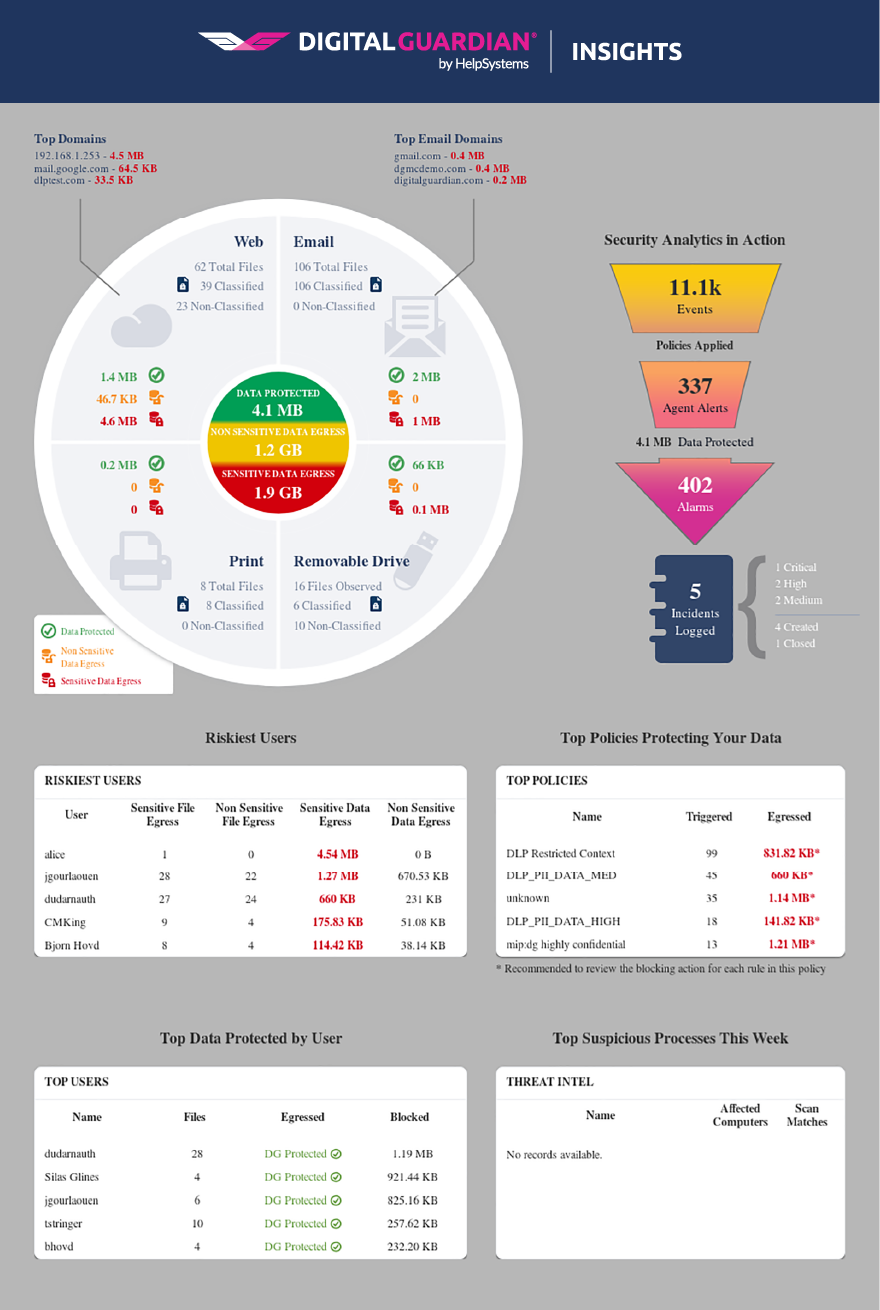“How effective are our security tools?”
A simple question, but if you’re not prepared it can make for an tough conversation. Security leaders must demonstrate the efficacy of the many solutions used to protect the sensitive data critical to business operations.

Digital Guardian recently added a new service, DG Insights for our Managed Security Program customers, to give a view into what DG DLP did in the past week. This automatically generated weekly email includes events that the Analytics & Reporting Cloud (ARC) sees as part of the normal data collections.
DG Insights includes:
- Triggered alarm counts
- Non-triggered - what is the customer's exposure
- Virus - # identified as suspicious in your environment (EDR customers only)
- Classified data movements (What we blocked vs. what wasn’t blocked)
- Highest data egressed vector - Email, USB, etc. (customer's riskiest type)
- Top control policies - PII, PHI, Confidential, etc.
This report is designed to help security teams by providing a look back at the previous week’s alerts, high risk users, data movement, etc. You can have it sent to multiple people in the business to keep them informed about how your DLP program is delivering value to the business.
If you want to see the whole DG platform in action, reach out to us and book a demo. We’ll tailor it to your business, your data, and your risks.
